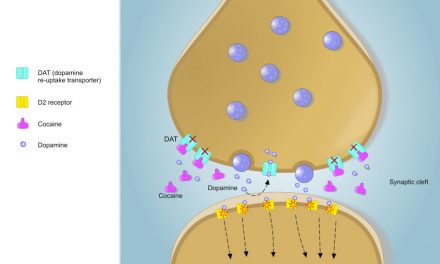Acupuncture is an effective treatment modality for patients with COPD (chronic obstructive pulmonary disease), an inflammatory lung disease. First Clinical Medicine College of Hubei University of Traditional Chinese Medicine researchers conducted a controlled clinical trial comparing acupuncture with the drug Seretide for improvements in lung function, clinical symptoms, and quality of life for patients with chronic obstructive pulmonary disease. Acupuncture produced results rivalling that of Seretide (a steroid plus beta-2-agonist inhaler). Spirometer measurements document that the lungs improve significantly from the drug and from acupuncture. Acupuncture monotherapy produced significant improvements in forced expiratory volume (FEV1), FEV1 to forced vital capacity ratio (FEV1/FVC), and peak expiratory flow (PEF). [1]
The results of this study indicate that both the drug Seretide and acupuncture monotherapy treatments offer significant benefits for patients suffering from COPD. This includes improvements in lung function, reduction in clinical symptoms, and enhanced quality of life. Although acupuncture treatments resolve symptoms more slowly than Seretide, it has the advantage of being safe, with a low risk of adverse effects.
COPD is a severe and sometimes life-threatening disease. COPD is often caused by tobacco smoking, exposure to fumes, chronic bronchitis, and emphysema. Clinical symptoms include coughing, excessive sputum production (clear, white, yellow, or green), wheezing, chest tightness, and shortness of breath.
COPD symptoms often negatively impact the quality of life. Conventional treatments include inhaled drugs such as Seretide, which act to reduce inflammation and open the airways. However, long-term use of such medications may result in tolerance and serious adverse effects, including liver and kidney damage. The Hubei University of Traditional Chinese Medicine study aimed to identify whether or not acupuncture could offer an effective solution, improving the quality of life with an added benefit over drugs: a reduction in the risk of adverse effects. The results indicate that acupuncture is a potent treatment option that produces significant positive patient outcomes.
A total of 61 patients with stable COPD were recruited for the study. One dropped out due to being unable to complete the treatment period, and the remaining participants were randomly assigned to receive treatment with Seretide (n=30) or acupuncture (n=30). The Seretide group consisted of 13 male and 17 female participants, with a mean age of 65.25 years, and a mean duration of disease of 10.78 years. The acupuncture group consisted of 14 male and 16 female participants, with a mean age of 62.87, and a mean duration of disease of 10.34 years. There were no statistically significant differences between the two groups in terms of demographics at the onset of the investigation. Inclusion criteria for the study were the following: clinical diagnosis of stable COPD, age 45–75 years, duration of disease 4–25 years, and the ability to give informed consent.
Seretide Group
Participants allocated to the Seretide group were prescribed Seretide inhalers containing the bronchodilator salmeterol (50mcg), and the corticosteroid fluticasone (250mcg). The dosage was one inhalation, twice per day, and the course of treatment was eight weeks.
Acupuncture Group
Although COPD is a disease which primarily affects the lungs, according to Traditional Chinese Medicine (TCM) theory, it also has the potential to impact the kidneys and spleen. Disharmony of these three internal organs leads to insufficiency of yang qi, accumulation of dampness, phlegm stagnation, and obstruction of the lungs. On this basis, the following acupoints were selected for use on all acupuncture group patients:
- Dingchuan (MBW1)
- Feishu (BL13)
- Zusanli (ST36)
Secondary acupoints were administered, based on diagnostic considerations:
- Fengmen (BL12)
- Lieque (LU7)
- Gaohuang (BL43)
- Danzhong (CV17)
- Tiantu (CV22)
- Fenglong (ST40
- Pishu (BL20)
- Shenshu (BL23)
Treatment was administered with patients in a seated position. Following standard disinfection, 0.35mm × 40mm filiform needles were inserted into the primary acupoints. Needles were inserted slowly and stimulated using a balanced reinforcing-reducing method to obtain deqi. Needles were retained for a total of 30 minutes.
Following removal of needles from the primary points, the patients were moved to a treatment couch and 2–3 of the secondary points were selected and needled according to the same procedure. Treatment was provided three times weekly, for a total of eight weeks. Any additional symptoms arising during the treatment period were treated with appropriate oral medications.
Results
Outcomes for the study fell into three categories. Lung function was assessed with a spirometer, which was used to measure the 1 second forced expiratory volume (FEV1), FEV1 to forced vital capacity ratio (FEV1/FVC), and peak expiratory flow (PEF). Clinical symptoms were also assessed and quality of life was measured using the St George’s Respiratory Questionnaire (SGRQ).
FEV1 and FVC scores are an indicator of lung function and are expressed as a percentage of the expected score for a healthy person of equivalent age, weight, and height. Prior to treatment, both groups were statistically similar in terms of lung function. In the Seretide group, mean FEV1 was 44.73%, mean FEV1/FVC was 52.38%, and mean PEF was 54.57L/min. In the acupuncture group, mean FEV1 was 45.94%, mean FEV1/FVC was 51.28%, and mean PEF was 54.38L/min.
Following treatment, both groups showed improvements in mean FEV1 and FEV1/FVC scores, rising to 60.21% and 60.43% in the Seretide group, and 60.11% and 58.77% in the acupuncture group. Mean PEF scores also improved in the Seretide group, rising to 59.93L/min. This outcome measure was greater than in the acupuncture group, whose mean PEF score rose to 55.42L/min (p<0.05).
Clinical symptoms such as coughing, sputum production, and breathlessness were rated using a points system to assess severity, with symptoms rated on a scale of 0–3. Scores were then added together, with a higher total score indicating more severe symptoms. Mean baseline scores were 5.72 in the Seretide group and 5.55 in the acupuncture group.
At the four week assessment, improvements were significantly greater in the Seretide group, with scores falling to 4.55 compared with just 5.45 in the acupuncture group (p<0.05). However, after eight weeks there was no significant difference between the two groups, with symptom scores rated at 4.25 in the Seretide group and 4.43 in the acupuncture group (p>0.05).
Quality of life was measured using the SGRQ, a 50 item questionnaire used to assess symptom severity and impact on daily activities, on a scale of 0–100. Baseline scores were similar across the two groups, with a mean of 54.28 in the Seretide group, and 52.59 in the acupuncture group (p<0.05). At the end of the study, the mean score in the Seretide group fell to 45.52, compared with 38.64 in the acupuncture group, indicating greater improvements in the acupuncture group (p<0.05).
The results indicate that Seretide and acupuncture are effective therapies for the treatment of COPD. Seretide features a rapid effective action and acupuncture demonstrates lasting results. One advantage to acupuncture is improved long-term safety. Patients are advised to consult with a licensed acupuncturist to learn more about acupuncture as a treatment option for COPD.
Reference:
1. Yang Junshu, Li Jia (2018) “Comparative Research on Effect of Acupuncture on Pulmonary Function and Life Quality of Patients with Chronic Obstructive Pulmonary Disease in Stable Phase” Journal of Hubei University of Chinese Medicine Vol 20 (4), pp. 30-33.






Recent Comments